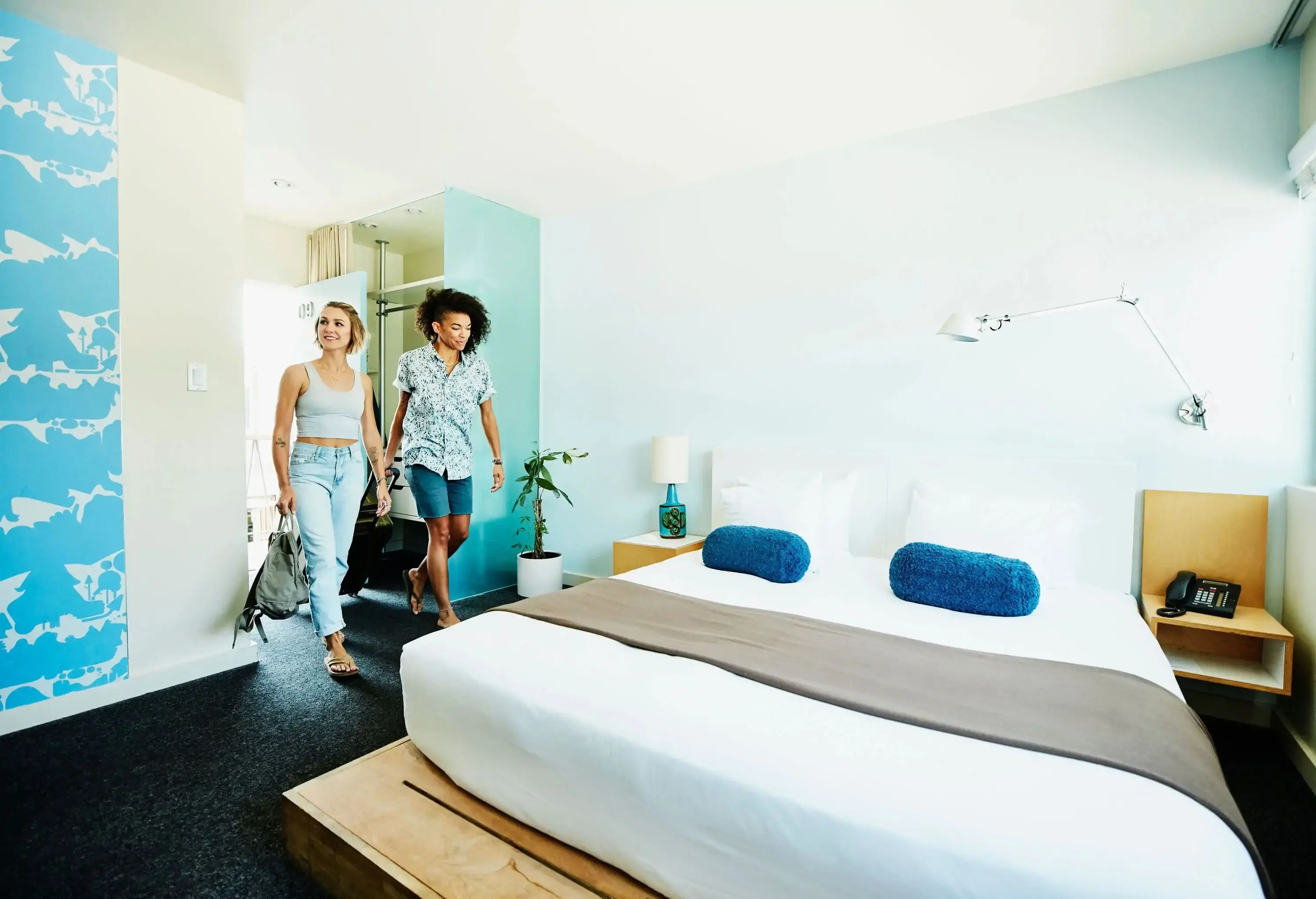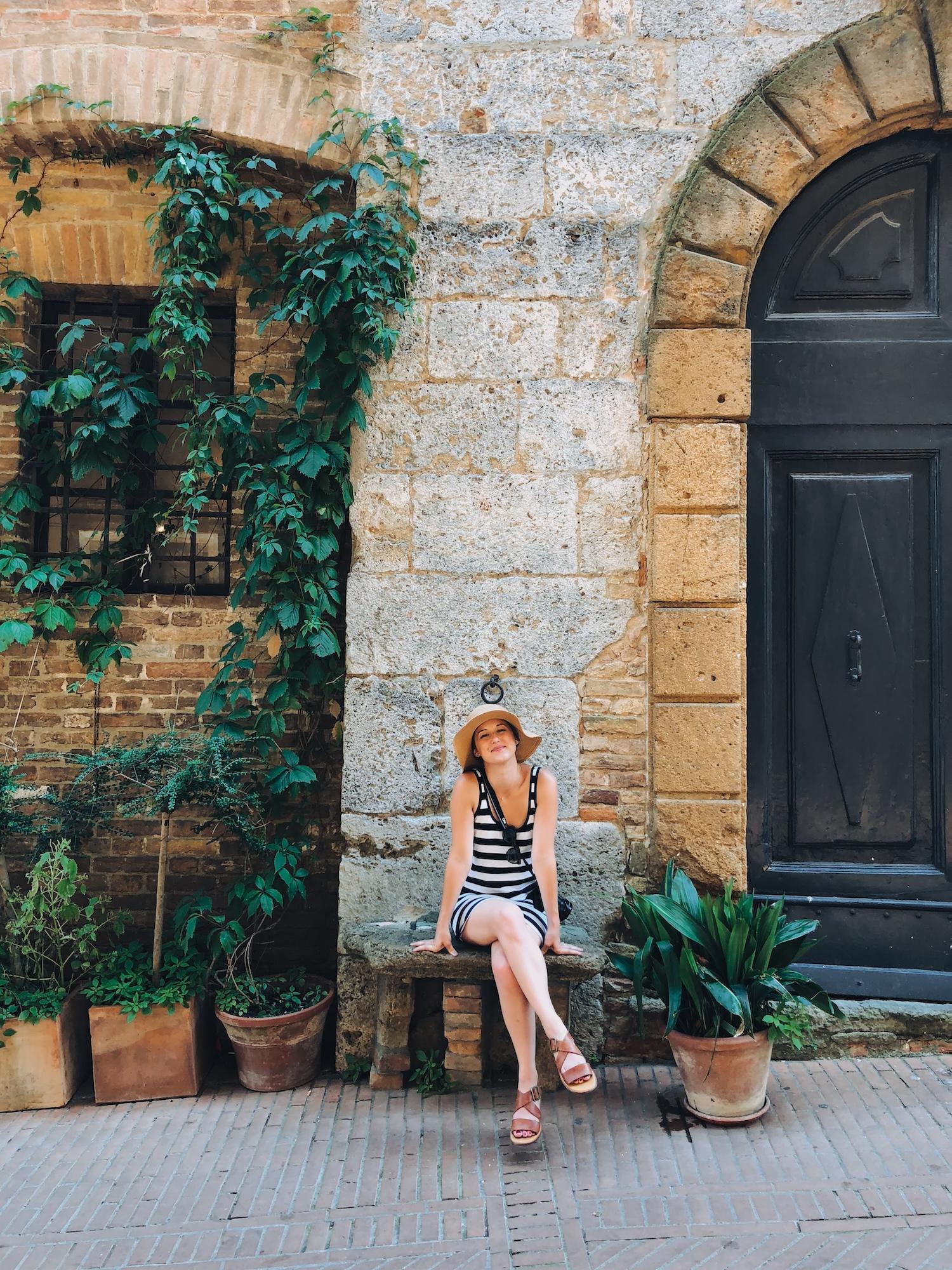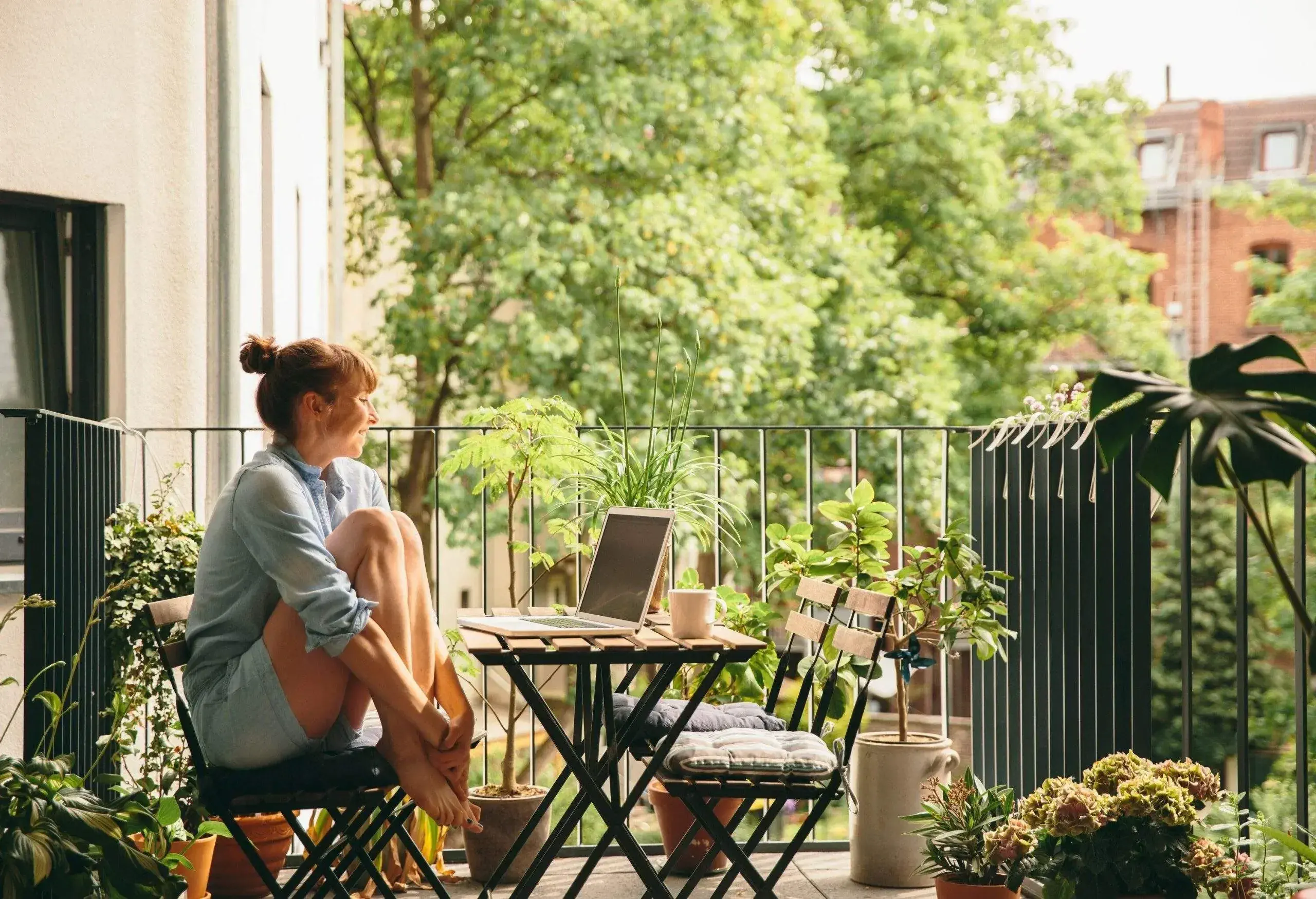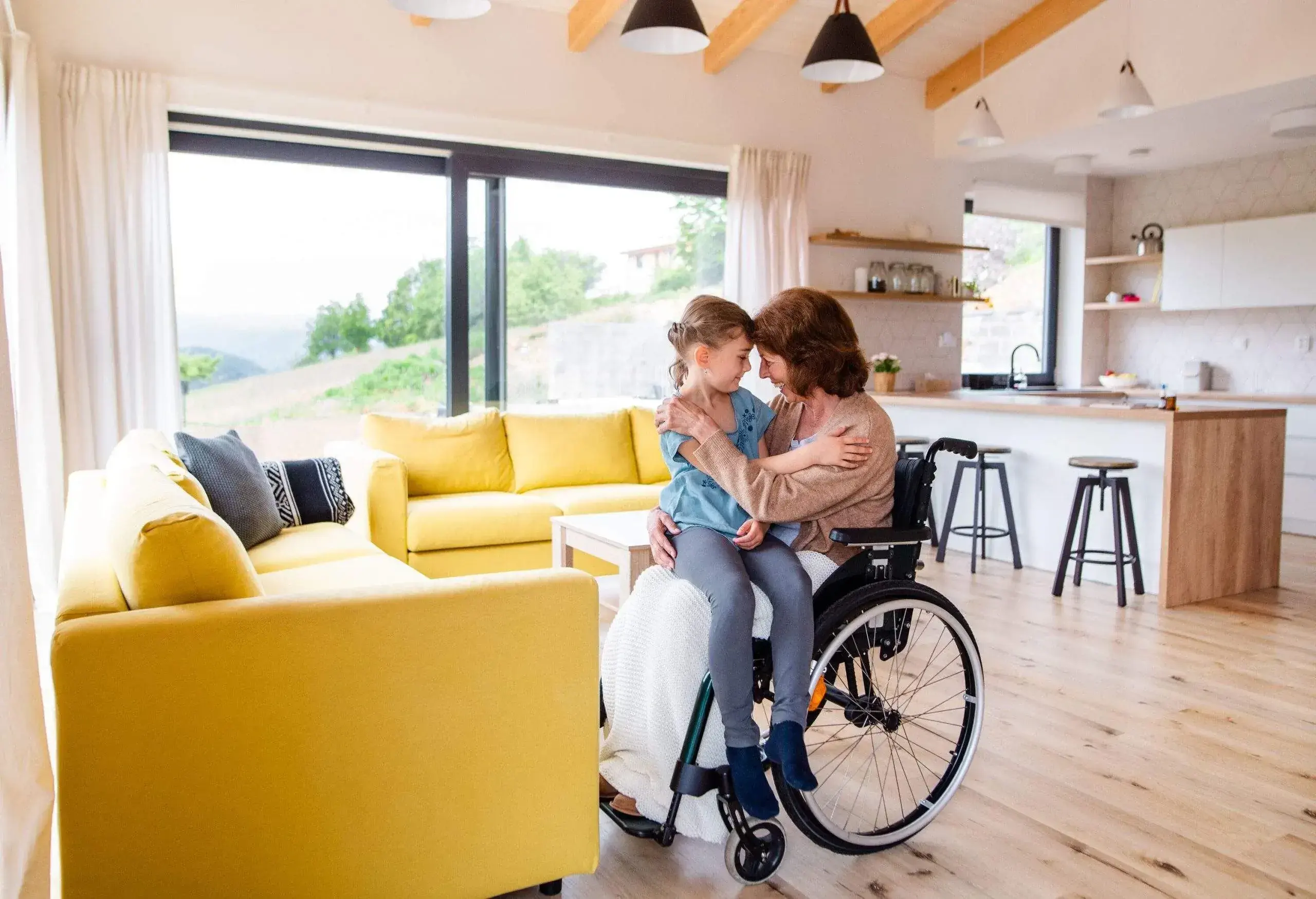Booking the right hotel room can make or break a holiday. But given the number of different hotel room types available, the booking process can often be confusing, whether you’re an experienced traveller or booking your first trip.
What is a single room in a hotel? What is a twin hotel room, and how is it different from a double room? And which rooms are suitable for families?
This comprehensive guide will explain everything you need to know about different hotel room types so you can feel confident when booking your upcoming stays.
What is a double room in a hotel?
A double room in a hotel is designed to comfortably host two guests, but the actual number of beds and their configuration vary.
Most standard double rooms are furnished with one double, queen, or king-size bed. A double room can be a great choice for couples, friends, or solo travellers – it’s just important to read the details about the bed types to make sure you’re not surprised when you arrive.
Double rooms typically include an en-suite bathroom, a desk, a seating area, a mini fridge, and other standard amenities.
What is the difference between a twin and a double room?
Both a twin and a double are suitable for two people. The main difference is that a double will have one bed suitable for two people (a double bed, for example) while a twin room has two beds, in the form of separate single beds.
Understanding different types of hotel rooms
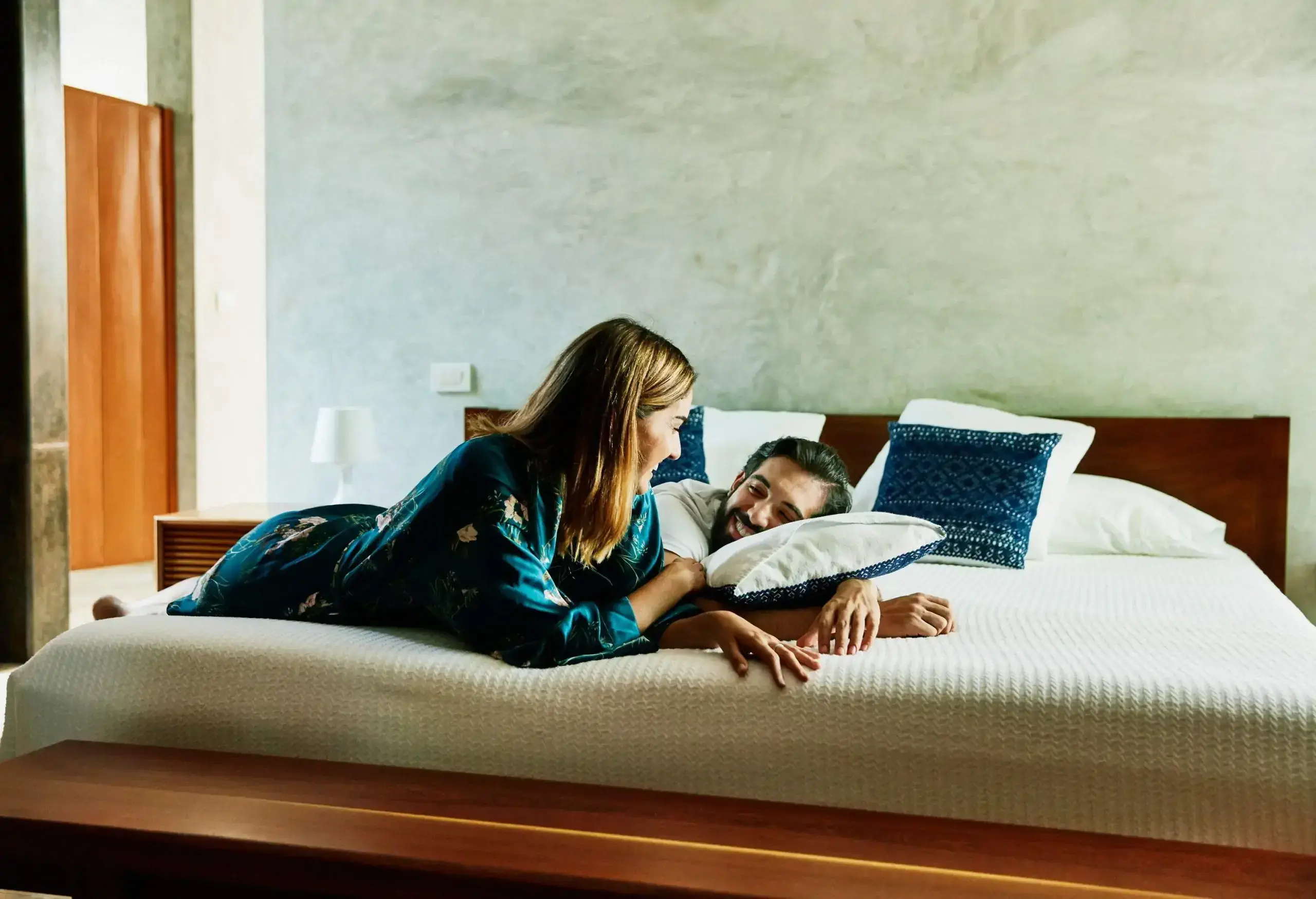
Hotels offer a variety of room types to accommodate a wide range of travellers – be it a family, a solo guest, or a couple – to make sure they’re accommodating different budgets, needs and preferences.
Rooms range from the smallest, most affordable option (the standard room) to more expensive, larger suites that can accommodate families, groups, or those simply looking for more space.
When you’re making a hotel reservation, browse each type of room available and pick the one that suits your needs and budget best. Not sure what’s what? Here’s a guide to the most common hotel room types:
Single hotel rooms
If you’re travelling alone and don’t need a spacious bed, book a single room. You’ll get a single bed – or a double bed, if you’re lucky. Single rooms might only have one small bed, but they generally still include all essential amenities like an en-suite bathroom, a television, and a desk.
Double and twin hotel rooms
Both of these room types sleep two guests. Double rooms are for two people who will be sharing a bed. This bed may be made up or two single beds pushed together or a double bed (size may vary). Twin rooms are for two people staying together who will each have a separate bed – perfect for two friends, family members, or colleagues travelling for work. If you’re travelling with children, you’ll probably need more space.
Family rooms
Hotels with family rooms typically cater to people with children, but what this means really depends on the property and brand. Often, a family room is more spacious and includes separate spaces or multiple beds (some even have bunk beds to accommodate more kids).
Family rooms can also feature amenities that make a room more comfortable for parents with children, such as cots, highchairs, bathtubs, and kid-friendly games. When booking a family room, always check which beds and features will be available to avoid surprises on the day.
If you are unsure or have special requirements, contact the hotel directly. They should be able to make arrangements to suit your needs.
Studios and suites
If you want more space, studios and suites are a good option. However, the price point for a larger space – whether a studio or a suite – typically jumps up quite a bit compared to a standard-size room.
The difference between a studio and a suite comes down to layout and size: a studio is typically a smaller open-plan room with living, sleeping (and sometimes kitchenette) areas integrated into one space. When travelling in the USA, you will also see studios referred to as mini-suites or junior suites.
When it comes to standard and luxury suites, they can range widely in terms of size and price. But overall, suites offer more space, usually with distinct living and sleeping areas separated by a door. This makes suites ideal for families. With a higher price tag, you can also expect special touches like tubs, balconies, or dining spaces.
Specialty suites
Many hotels offer specialty suites. ‘Honeymoon suites’, for example, will often have romantic touches intended for a newlywed couple.
‘Executive suites’ or ‘penthouse suites’ are the most luxurious and expensive option. Usually there is only one of these types of suites to book, and they tend to have large floor space, opulent amenities, and extras like private outdoor jacuzzis, expensive art, and designer furniture.
Accessible rooms
Accessible rooms are designed for guests with mobility challenges or other disabilities. Features can include wider doorways, lowered fixtures, and roll-in showers with grab bars. For more information, read our guide on accessible hotel rooms by accessible travel blog founder Cory Lee.
Villa, cabana, and other unique accommodations
If you have a large group or want to book a more unique or luxurious accommodation, some hotels offer lodging beyond the standard rooms and suites. Villas, cabanas, apartments, cabins, or bungalows are all private, standalone options located around the property that offer more square feet, full kitchens, laundry facilities, and other amenities that allow you to stay for longer periods or simply enjoy more space.
Understanding different hotel bed types

It’s not just room types you need to consider when booking a hotel. You also need to look at the hotel room bed sizes and configurations. Common bed types include:
Standard/double bed
A standard/double bed is common in standard hotel rooms. It is smaller than a queen and more comfortable for one person, though some couples won’t mind a closer sleeping arrangement. A double bed is typically 54 inches (1.4m) wide by 75 inches (1.9m) long.
Queen bed
A queen bed offers more space than a double bed, measuring 60 inches (1.5m) wide by 80 inches (2m) long. The extra width makes it a more comfortable choice for couples.
King bed
A king bed is a large bed size that feels more luxurious, with standard dimensions of 76 inches (1.9m) wide by 80 inches (2m) long. Ample sleeping space makes it a more luxurious choice for couples or anyone who enjoys a roomy sleeping space.
California king bed
Also known as a “Cal King” bed, the key difference between a king bed and a California king bed is that it offers extra length. The standard dimensions are 72 inches (1.8m) wide by 84 inches (2.1m) long. This makes it an ideal choice for taller people.
Twin bed
Also known as a single bed, a twin bed is meant for one person, measuring 38 inches (1m) wide by 75 inches (1.9m) long.
Murphy bed
A Murphy bed, also known as a wall bed, is designed to save space by allowing you to easily fold the bed up against a wall (or in a cabinet) when you don’t need it and pull it back down when you do.
Sofa bed
Common in hotel rooms, a sofa bed (also known as a pull-out couch), is a sofa that includes a mattress that can be pulled out to become a bed. This is a helpful feature in a hotel room to accommodate additional guests or children.
Trundle
A trundle bed is another save-spacing design. It looks like a regular bed, usually a full or twin-size mattress, but it includes an additional (smaller, usually twin-size) mattress that can be pulled out from underneath the upper bed when needed.
How to book the best hotel rooms
Now you’ve decided what type of room you’re looking for, it’s time to think about how to get the best one available. When booking a hotel room, keep these factors in mind.
The floor level
People often request rooms on higher floor levels – primarily because they tend to offer better views. These lofty rooms are also farther away from street activities, making them quieter and more private.
However, keep in mind that lift wait times may be longer, and taking the stairs will involve more of an effort. The lowest floors have their perks, including the ability to bypass the lift altogether by taking the stairs or, being able to walk out directly from your room.
The side of the hotel
This really depends on the hotel and your personal preferences. Often, you want to choose the side with the best view, be it ocean, mountain, or cityscape. Other times, you may want to be facing the pool, especially if on the ground floor with direct access from your room. Sometimes you can specify which side of the hotel you want to be on during the booking process, but if not, you can email in advance to specify.
Proximity to lifts or stairs
Some people prefer being close to the staircase or lift for easy access to the street level and hotel amenities, like the pool or lobby. However, others like to be further away from the stairs or lift to avoid the noise these areas can bring.
Bed types and layout
Hoping for a King bed for you and your partner, and a pull-out sofa for the kids? Or maybe you want two double beds for a group of friends? In addition to the location of your room, you’ll want to make sure it has the right types and number of beds to fit you or your group.
Room policies
Certain rooms have different policies that are important to look out for. Bringing your dog? Make sure the room is pet-friendly and you note any associated pet fees. Want flexibility? Reserve a room with free cancellation. Need smoking or non-smoking? Check the fine print.
Must-have hotel room amenities for travellers

If done well, the design of and amenities in a hotel room can make a stay more comfortable. A room lacking basic features or the upgrades you want can put a damper on your experience. The basic features I look for in a hotel room include:
- A comfy bed (hotel reviews will often mention whether beds and pillows are comfy)
- A work desk
- Free Wi-Fi
- A TV
- Mini fridge
- Housekeeping services
- Free toiletries
- Air conditioning
- Non-smoking status
Other thoughtful amenities I enjoy having, but consider an extra perk, include:
- An in-room coffee or espresso machine
- Robes and slippers
- A minibar
- A smart TV
- Free breakfast
- A bathtub
- A fireplace
- A balcony
How to filter and find the right room on KAYAK
When I travel, I use a variety of tools to research hotels and the rooms they offer, including KAYAK’s Hotel Search. When searching for a hotel room, I recommend the following steps:
Compare room types and price points
First, understand the types of hotel rooms available and their price differences. KAYAK allows you to compare rates across hotels on any given night and clearly shows on each hotel page the prices organized by room type.
For example, that means you can see the price difference between double and twin rooms, premium and superior rooms all in one place, including important information to consider like the number and types of beds in the rooms and policies. Seeing all of this information in one place makes it easier and faster to make a decision.
Look through the room pictures
It can be hard to get a sense of a hotel room by a list of features alone. That’s why I always like to look at pictures of rooms to better understand what to expect. When comparing prices and room types on KAYAK, you can also see actual pictures of the rooms available, so you know what to expect from the room before booking.
When clicking on the picture displayed with each room type on KAYAK, you’re able to pull up even more angles of the room as well as a detailed description that lists room size, bed configurations, amenities, and policies.
Read customer reviews
In addition to looking at pictures, I also find looking at customer reviews helpful. Often, travellers will note what they liked or didn’t like about a particular room layout or location, which will help me decide which way to book.
Once you make a decision and hit ‘book’, you have secured the room type you can expect when you arrive. When it comes to exactly the location you want within a hotel – perhaps you want to be on the top floor or to be near the lift – it’s a smart idea to email or call in advance to make that request.
Use KAYAK’s hotel filters
If you are looking for specific amenities or a certain style of hotel, you can use KAYAK’s filters to narrow down your search. You can also filter by price. hotel class and location. To find these filters simply do a stays search on KAYAK. On the result page, you’ll see an option for ‘All filters’. Simple pick the ones most relevant to you.
How to ask the hotel for a free upgrade

With the right approach and timing (plus a little luck), getting a room upgrade can be possible. Upgrades are rarely guaranteed, but over the years, I’ve developed several strategies for increasing my chances.
Use loyalty programmes
If you’re a part of the hotel loyalty programme, they often offer perks like automatic room upgrades when available to members. Make sure to check the details of the programme and mention your membership upon arrival.
Mention special occasions
Are you celebrating a birthday, anniversary, or honeymoon? Let the hotel know. It’s even better to do this in advance than upon arrival so they can plan accordingly.
Arrive at the right time
While there is no sure-fire trick to scoring an upgrade, arriving early or late when the hotel is less busy and has a better idea of room availability often helps. Stays during non-peak times also helps your chances.
Have the right attitude
Be polite and friendly when asking the front desk if there’s an upgrade available. Simply mention that you’d appreciate them checking if any upgrades are available.
Research is key to finding the perfect hotel room
Securing the right hotel room for your holiday requires doing the right research before booking, including evaluating bed and room types, researching amenities and policies, and making specific requests when it makes sense. When choosing a hotel room for your next adventure, make sure to keep these considerations and tips in mind so that when you walk into that hotel room door, you’re nothing but pleased.
Looking to evaluate holiday rentals alongside hotels to decide which is best for your trip? KAYAK’s search function allows you to compare hotels, vacation rentals, and unique accommodations from hundreds of websites to make booking faster and easier.
FAQs
The average size of a standard hotel room is roughly 300 square feet (about 28 square meters), though this varies depending on the brand and location. Luxury brands usually have larger standard rooms, while budget choices average closer to 250 square feet (around 23 square meters).
Yes, a twin room in a hotel generally has two single beds.
In general, yes, hotels allow guests to have visitors in their rooms or other areas on the property. However, some hotels have certain policies around visitors, be it requiring you to escort them up to your room, inform the front desk of visitors’ names, or limit their access to certain areas.
The Bibles in hotel rooms come courtesy of the Christian group Gideon International. The practice dates back over 100 years. In 1899, two Christian salesmen got the idea when they were traveling and sharing a hotel room. Starting in 1908, the group has become synonymous with the free Bible distribution to hotels.

